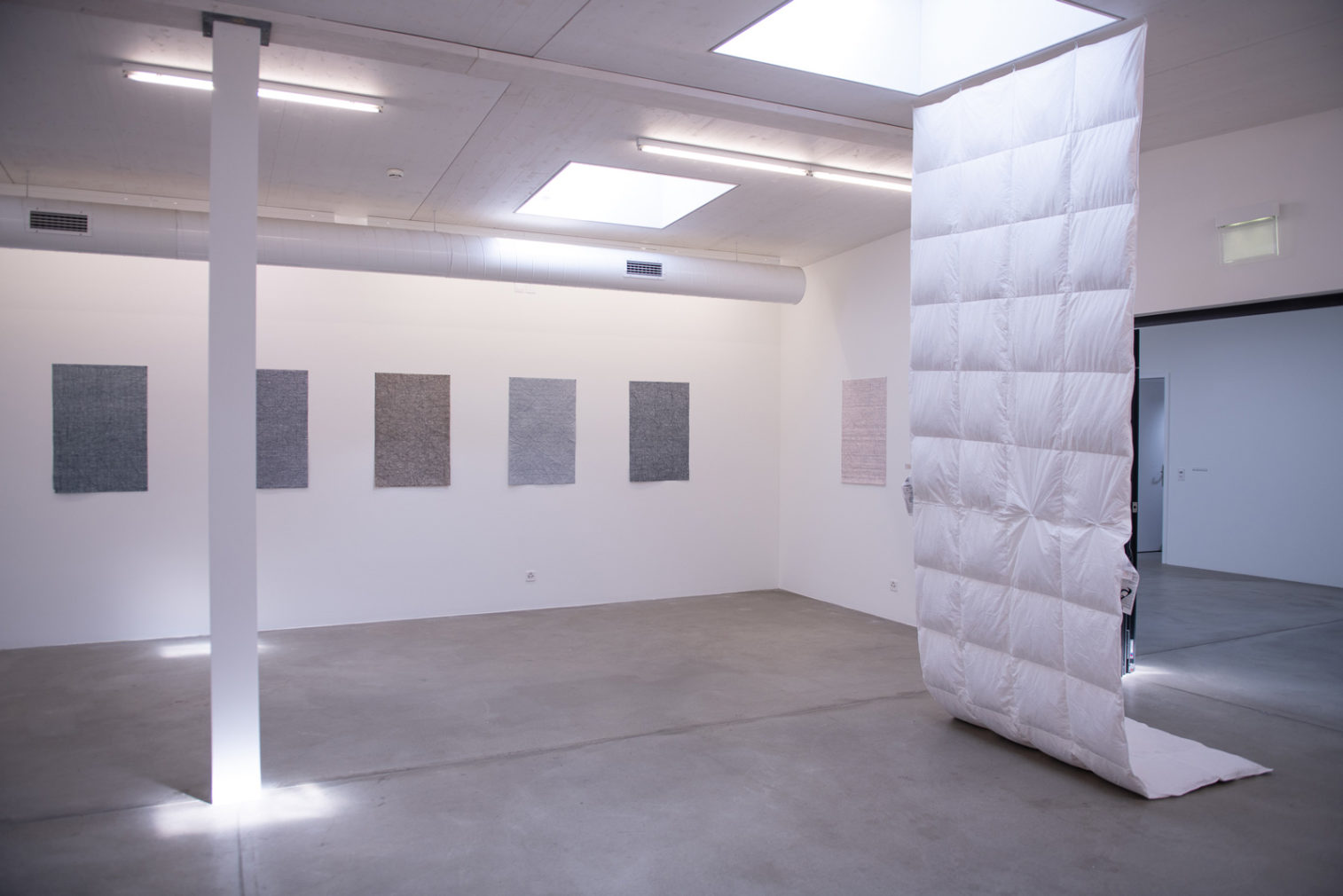Shadwa Ali, Nikki Middlemiss, Elia Setiadi, Seraina Semmelroggen, Olivia Vidovic
Kuratiert von Filipa Ramos
Eröffnung 2. April 2025, 17:30
Ausstellung 3. – 13. April 2025
Öffnungszeiten: Freitag bis Sonntag, 14:00 – 18:00
Atelier Mondial, Basel / Münchenstein
ateliermondial.com
Dieses Jahr feiern wir das zehnjährige Jubiläum der Zusammenarbeit zwischen dem Atelier Mondial und dem Institut Kunst Gender Natur HGK Basel FHNW. Seit 2015 organisieren das internationale Stipendienprogramm und das Institut Ausstellungen, die Kunststudierende mit den internationalen Künstler:innen zusammenbringen, die im Atelier Mondial in Basel/Münchenstein zu Gast sind. Die Ausstellung im Frühling 2025 findet zeitgleich mit dem Frühlingssymposium Quantum Knowledge: States, Systems, Fictions des Institut Kunst Gender Natur HGK Basel FHNW (2. – 3. April 2025) statt, das an das Internationale Jahr der Quantenwissenschaft und Quantentechnologien der UNO angelehnt ist und das 100-jährige Bestehen der Quantenmechanik feiert. Die von Filipa Ramos kuratierte Ausstellung The Cat in the Box greift die Themen des Symposiums auf und zeigt Kunstwerke, welche die Art und Weise, wie die Quantenwissenschaft unser Leben, unsere räumlichen Beziehungen und unsere Weltanschauungen prägt, näher beleuchten.
The Cat in the Box ist ein Gedankenexperiment, das zu einer Ausstellung wurde. Ein Gedankenexperiment ist eine vom theoretischen Physiker Erwin Schrödinger (1887 – 1961) konzipierte Möglichkeit, über das Leben zu spekulieren und dabei Unbelebtes und Belebtes, Geheimnisvolles und Wissenschaft balanciert. In seinem berühmtesten Gedankenexperiment stellte sich Schrödinger eine Katze in einer Kiste vor, in der sich auch ein Glas mit Gift und eine radioaktive Substanz befand, die das Glas mit dem Gift zerbrechen und die Katze töten konnte. Oder auch nicht. Mit diesem mentalen Experiment schuf er ein Problem, das niemand lösen konnte, nicht einmal er selbst. Bis heute ist diese Katze in den Köpfen der Menschen zugleich lebendig und tot – auch wenn es dem Wissenschaftler nicht um die Katze, sondern um die Anwendung von Quantenwissen ging. Er zeigte damit, dass Quantenwissen nicht dazu da ist, die Zukunft vorherzusagen, sondern Erklärungen für die Welt zu liefern. Dabei hat die Quantenwissenschaft dieselbe Funktion wie Mythen: Sie bietet plausible, aber auch seltsame und paradoxe Möglichkeiten, dem Leben einen Sinn zu geben.
Inspiriert von Schrödingers Vorschlag, ist The Cat in the Box eine Ausstellung, die keine geradlinige Geschichte erzählt. Eigentlich erzählt sie überhaupt keine Geschichte. Stattdessen geht es darum, wie Kunst Fragen stellen kann, Begegnungen auslöst, Einblicke in Ideen bietet, die vielleicht vorhanden sind oder auch nicht, und wie das Betrachten das Betrachtete verändert. Die Ausstellung arbeitet mit Ketteneffekten: Ein:e Künstler:in stellt eine Arbeit vor und lädt eine:n andere:n Künstler:in ein, dasselbe zu tun. Das Ergebnis ist eine Ausstellung, die auf rätselhafte, verstrickte Weise stattfindet, fast magisch, wie in der Quantenphysik.
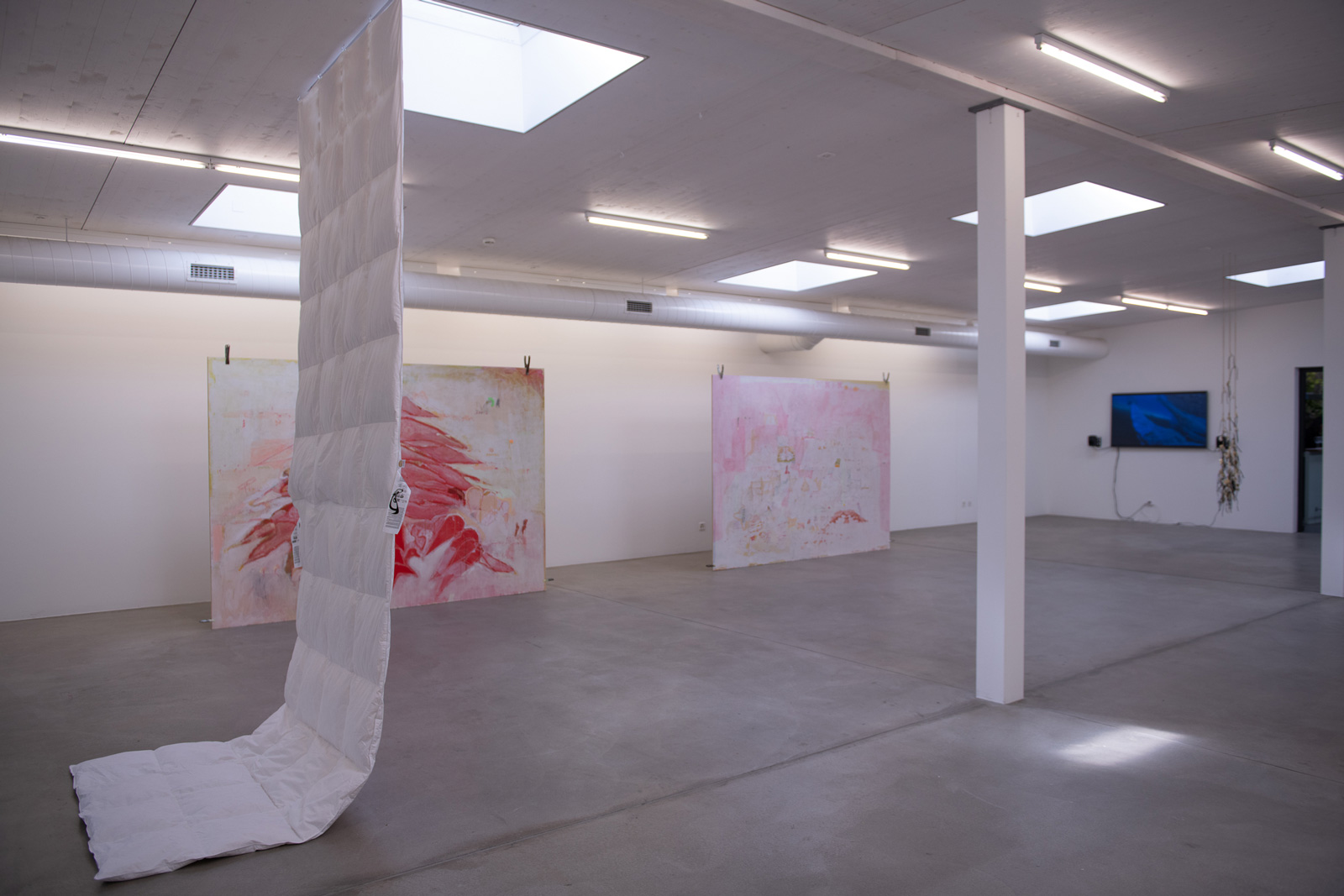
Installation view The Cat in the Box, Atelier Mondial and Institute Art Gender Nature HGK Basel FHNW, Basel/Münchenstein, 2025, photo: Mariana Murcia
The Cat in the Box
Shadwa Ali, Nikki Middlemiss, Elia Setiadi, Seraina Semmelroggen, Olivia Vidovic
Curated by Filipa Ramos
Opening Wednesday 2 April 2025, 5.30 pm
Exhibition 3 – 13 April 2025
Opening hours: Friday to Sunday, 2 – 6pm
Salon Mondial, Basel / Münchenstein
ateliermondial.com
This year, we celebrate the tenth anniversary of the collaboration between Atelier Mondial and Institute Art Gender Nature HGK Basel FHNW. Since 2015, the international residency program and the Institute have organized exhibitions that bring together art students with the international artists in residency at Atelier Mondial in Basel/München. The spring 2025 exhibition coincides with the spring symposium Quantum Knowledge: States, Systems, Fictions of the Institute Art Gender Nature HGK Basel FHNW (2 – 3 April 2025), held in conjunction with the UN’s International Year of Quantum Science and Technology, celebrating 100 years of quantum mechanics. Curated by Filipa Ramos, The Cat in the Box echoes and reverberates the symposium’s topics, featuring a series of artworks that expand on the ways in which quantum science shapes our lives, spatial relations, and worldviews.
The Cat in the Box is a thought-experiment turned into an exhibition. A thought-experiment is a possibility, conceptualized by theoretical physicist Erwin Schrödinger (1887 – 1961), to speculate about what is life, balancing the inanimate and the animate, mystery and science. In his most famous thought-experiment, Schrödinger imagined a cat inside a box where there was also a jar with poison and a radioactive matter that could break the jar of poison and kill the cat. Or not. With this exercise, he created a problem that no one, not even himself, could resolve. Until today, this cat exists simultaneously alive and dead in people’s minds. Even if what mattered to the scientist was not the cat but the uses of quantum knowledge. With this thought-experiment, he showed that quantum knowledge isn’t made to predict the future but to offer explanations about the world. As such, quantum science has the same function as myths: to offer plausible but also strange and paradoxical ways of making sense of life.
Inspired by Schrödinger’s proposal, The Cat in the Box is an exhibition that tells no straightforward story. It actually tells no story at all. Instead, it considers how art may ask questions, activate encounters, offer glimpses of ideas that may or may not be there, and how observation changes the observed. It operates through chain effects: an artist who presents their work and invites another artist to do the same. The result is an exhibition that happens in mysterious ways, entangled, almost by magic, like in quantum physics.
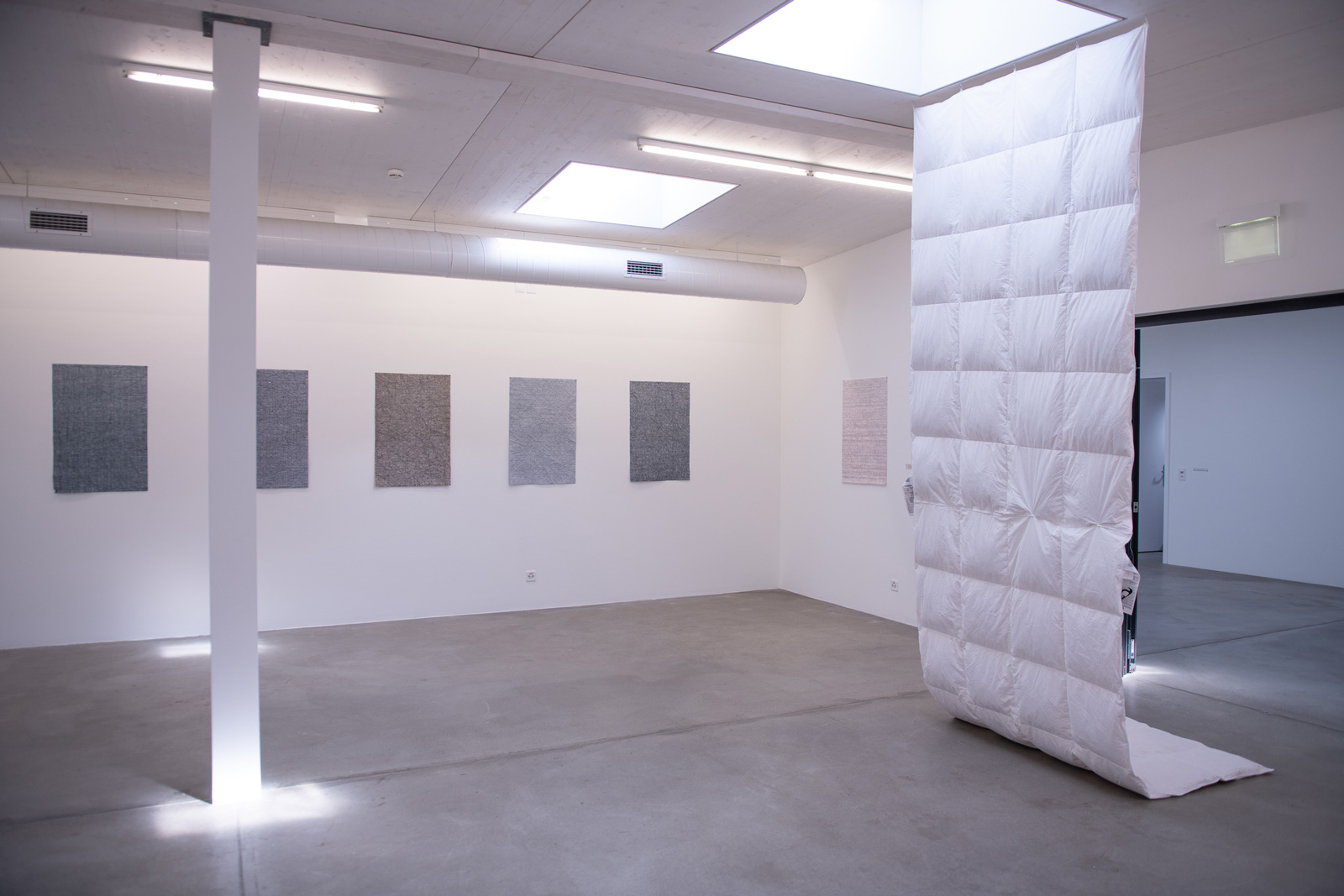
Installation view The Cat in the Box, Atelier Mondial and Institute Art Gender Nature HGK Basel FHNW, Basel/Münchenstein, 2025, photo: Mariana Murcia
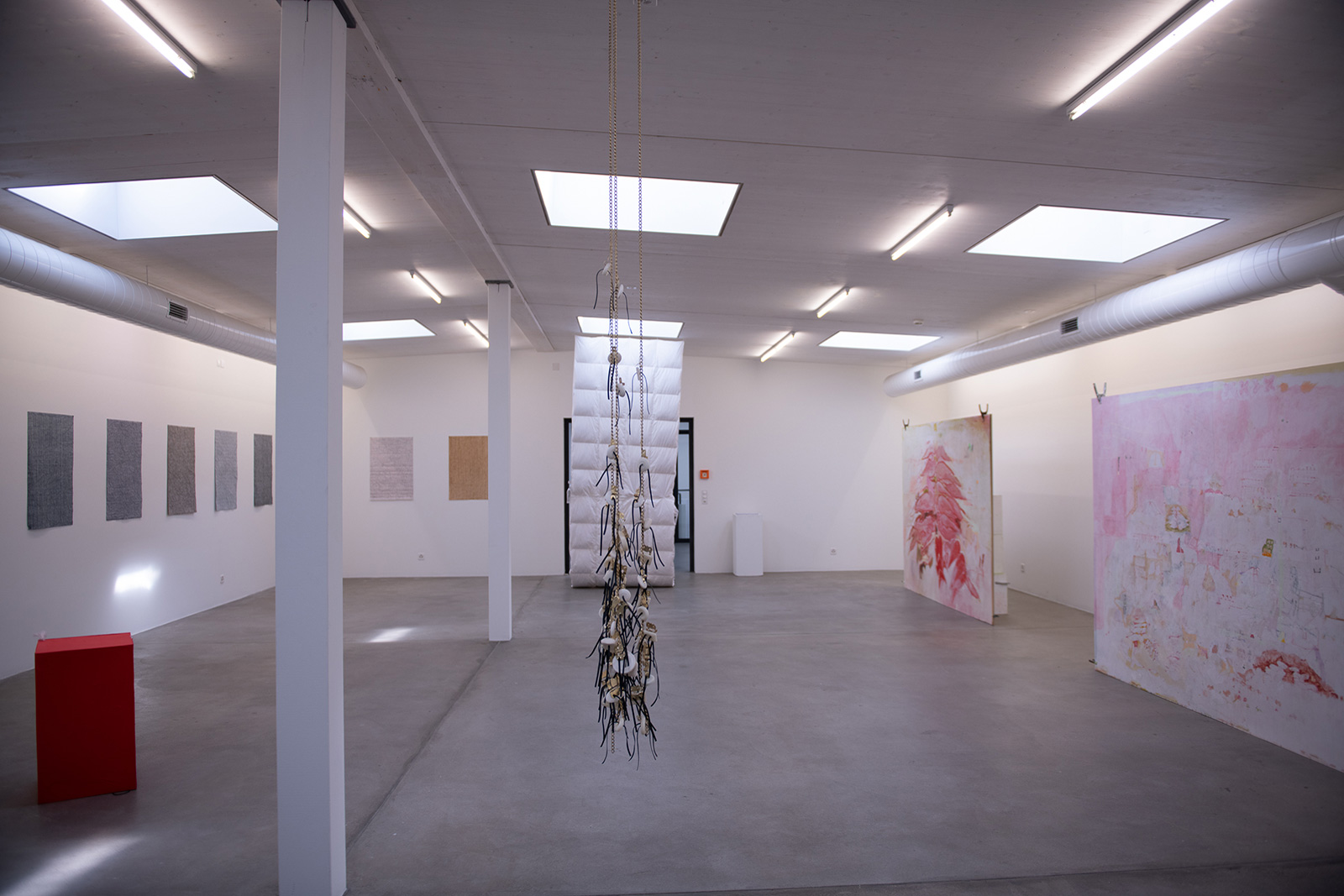
Installation view The Cat in the Box, Atelier Mondial and Institute Art Gender Nature HGK Basel FHNW, Basel/Münchenstein, 2025, photo: Mariana Murcia
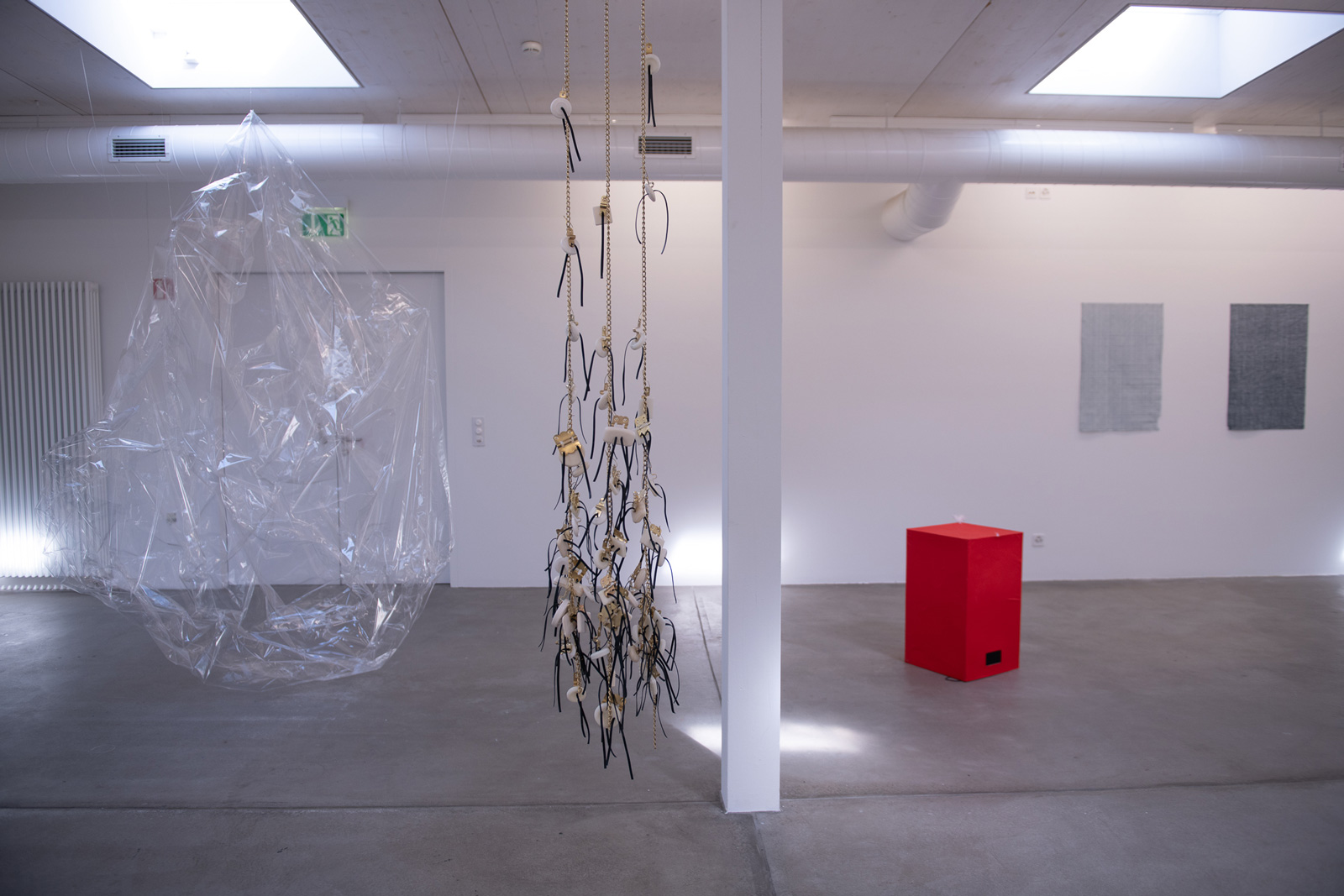
Installation view The Cat in the Box, Atelier Mondial and Institute Art Gender Nature HGK Basel FHNW, Basel/Münchenstein, 2025, photo: Mariana Murcia
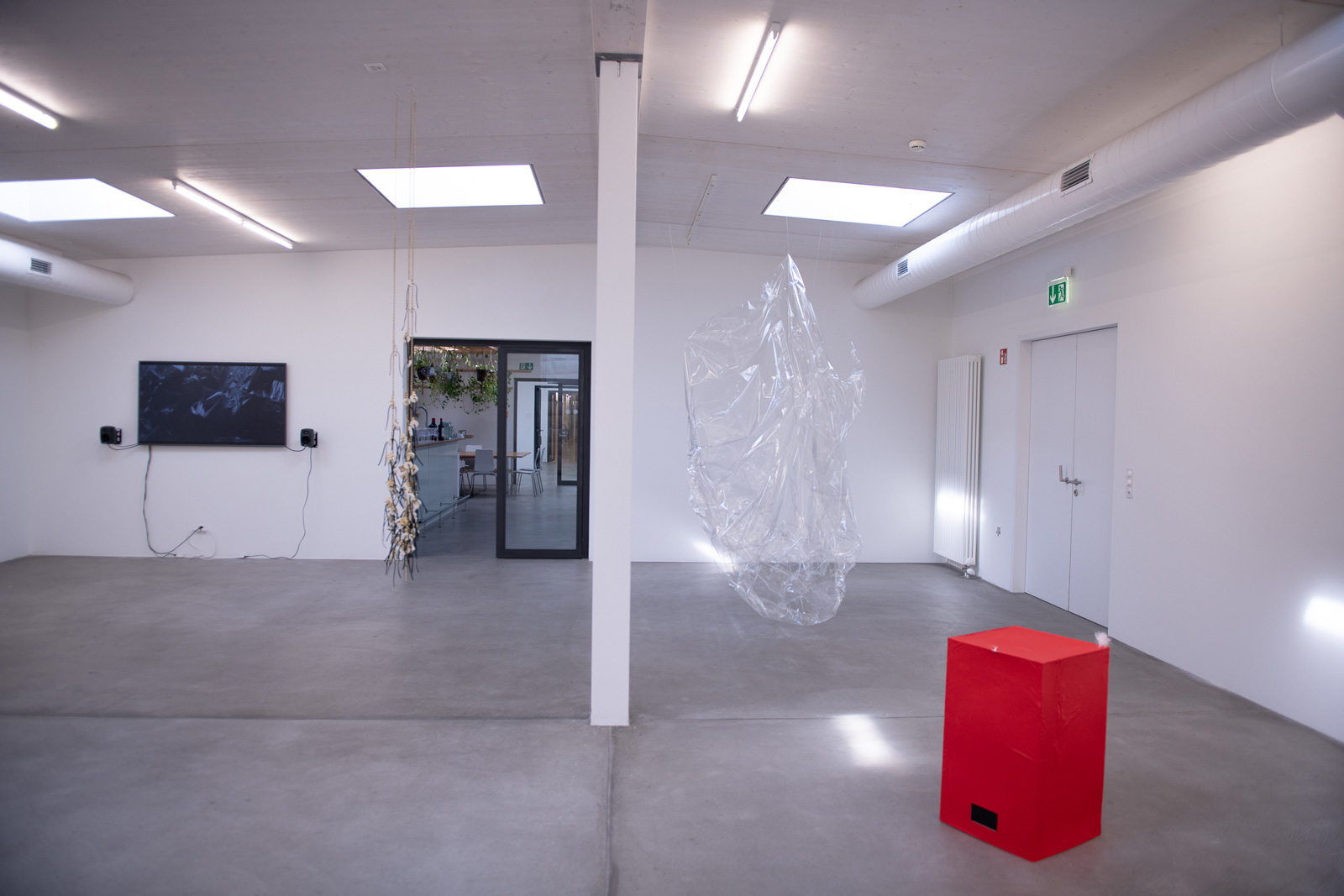
Installation view The Cat in the Box, Atelier Mondial and Institute Art Gender Nature HGK Basel FHNW, Basel/Münchenstein, 2025, photo: Mariana Murcia



